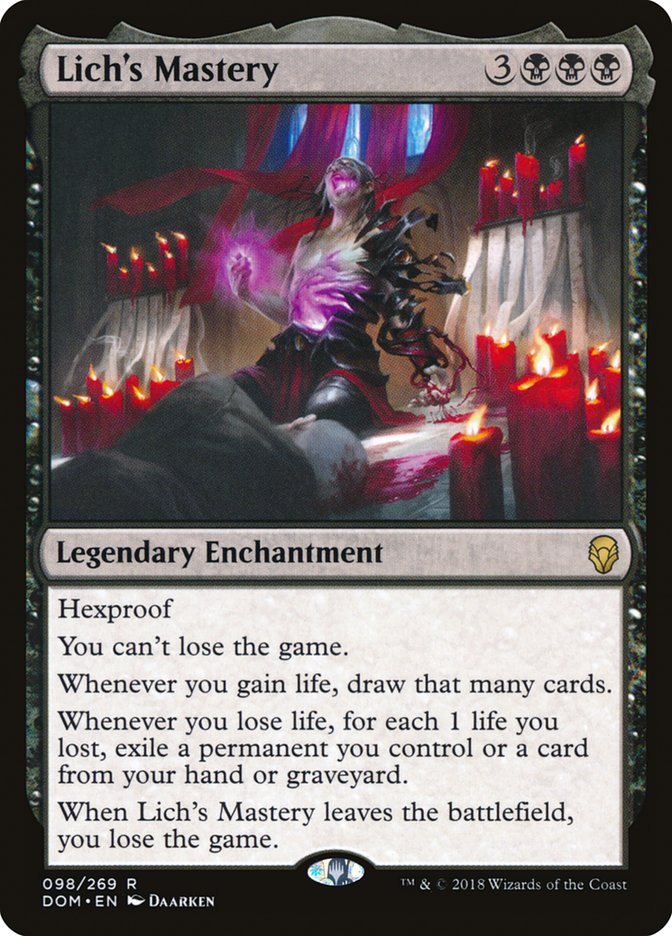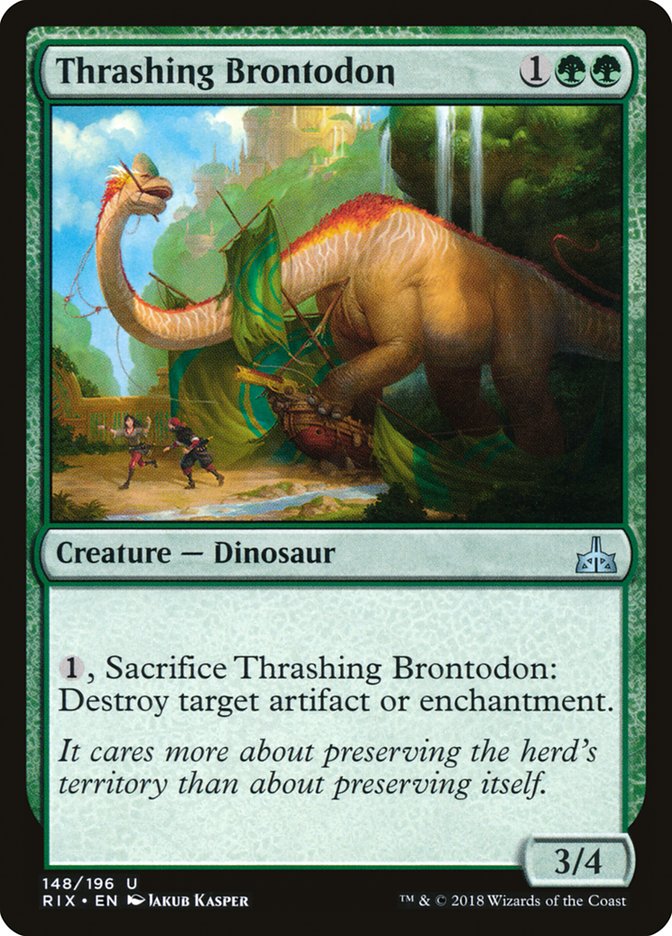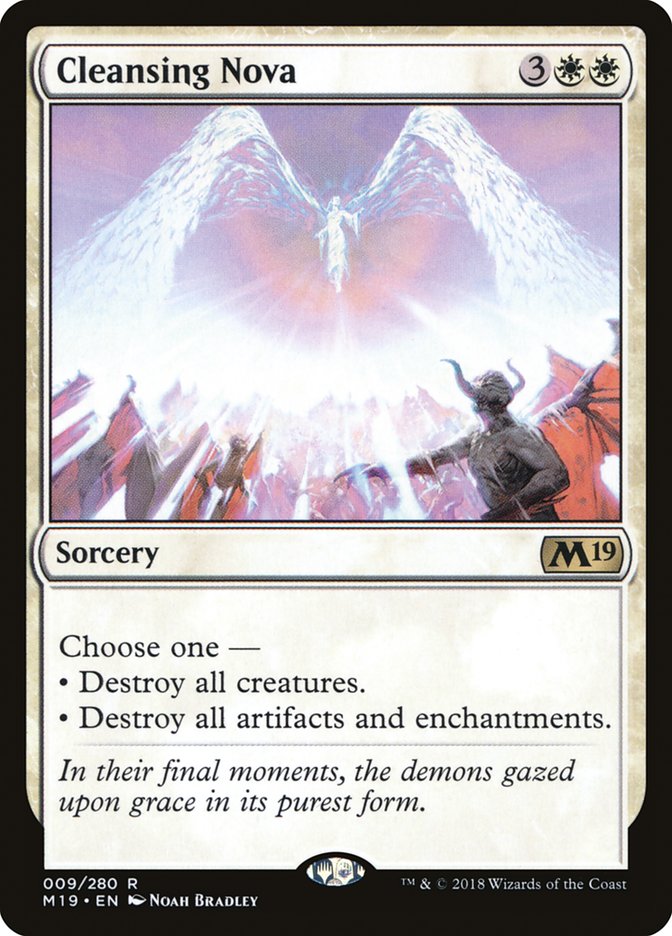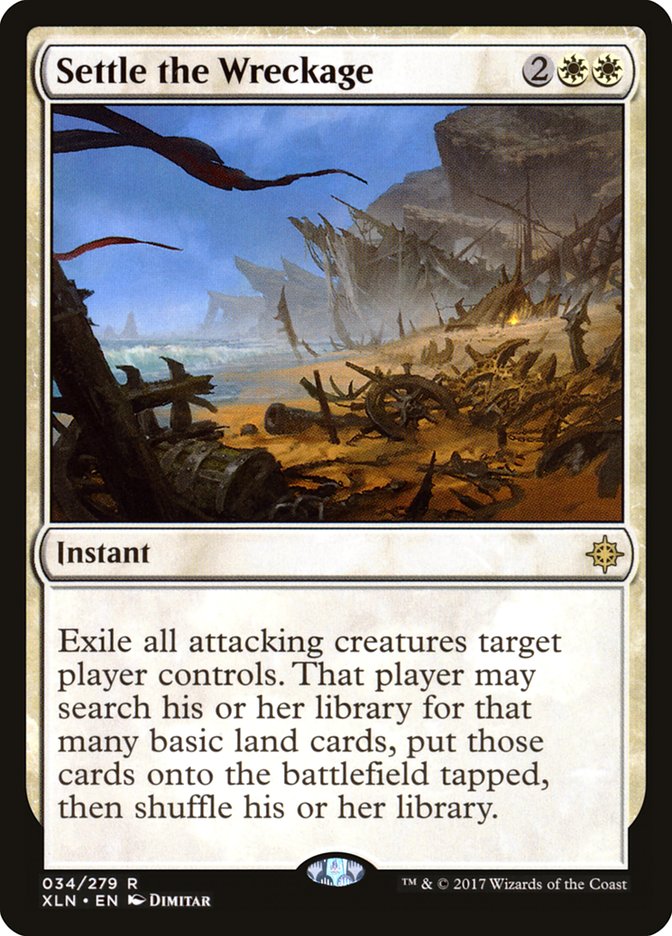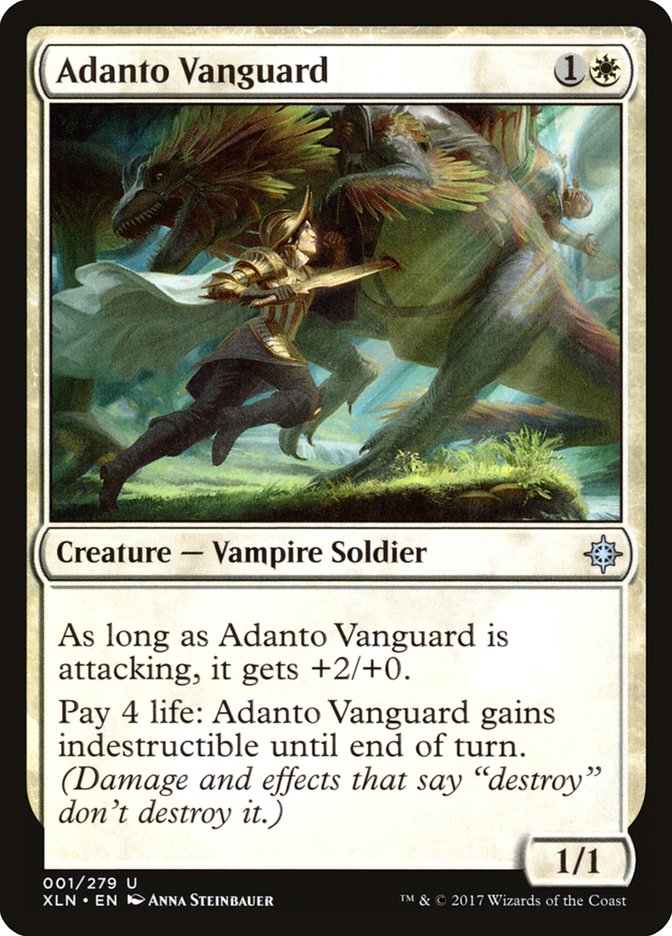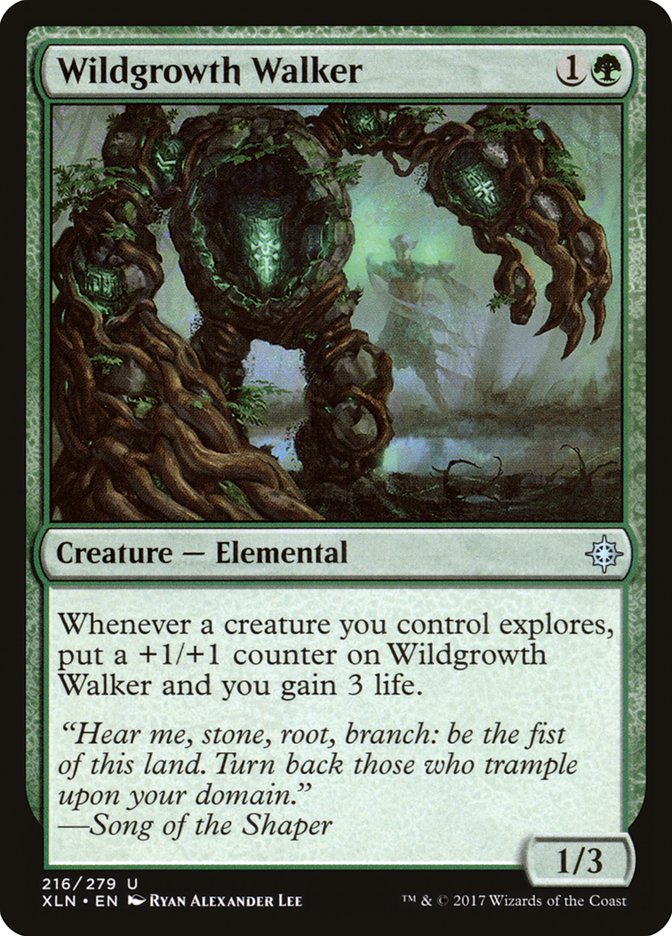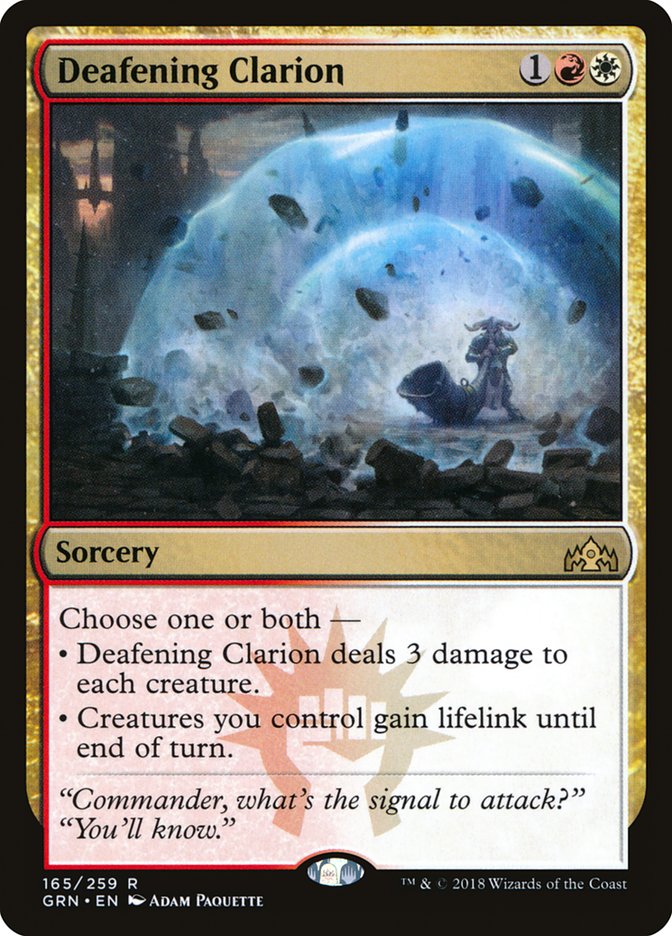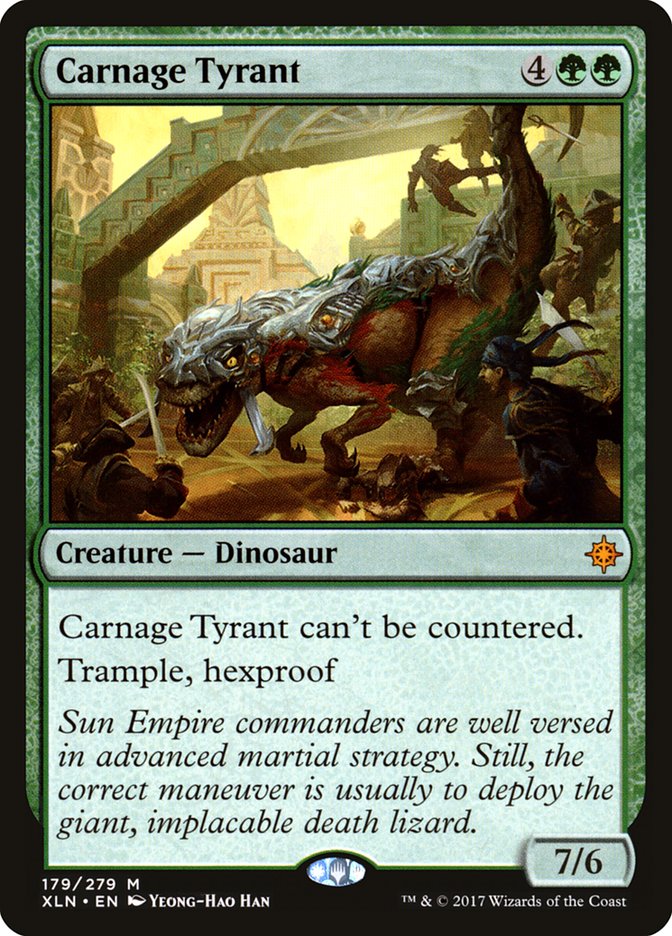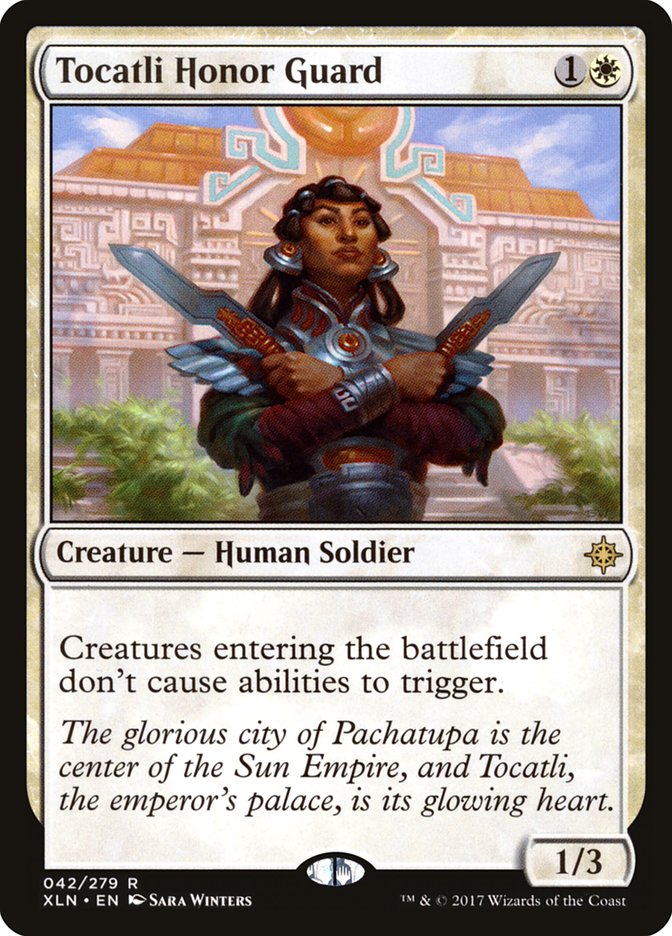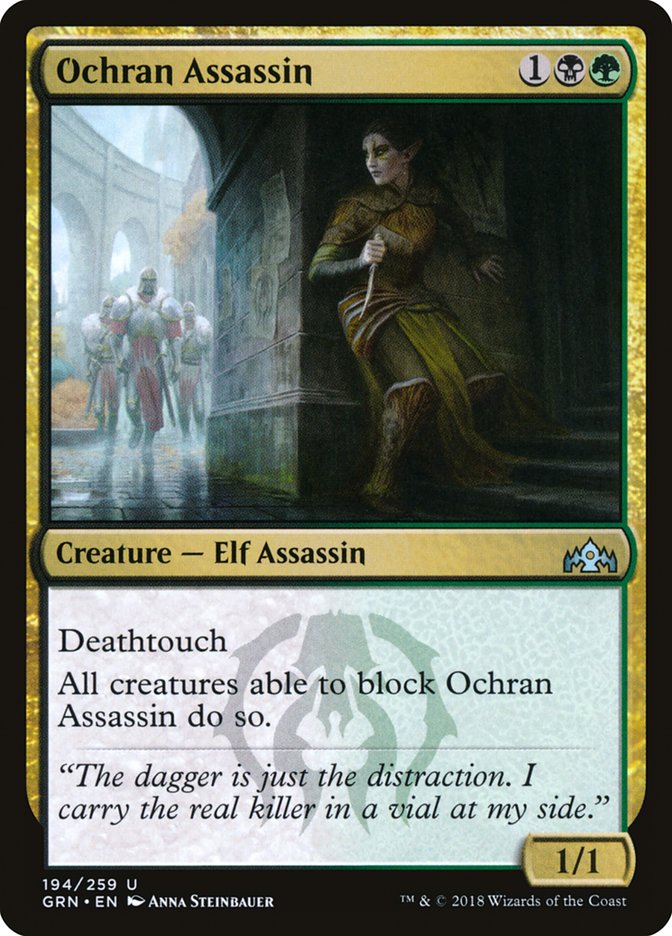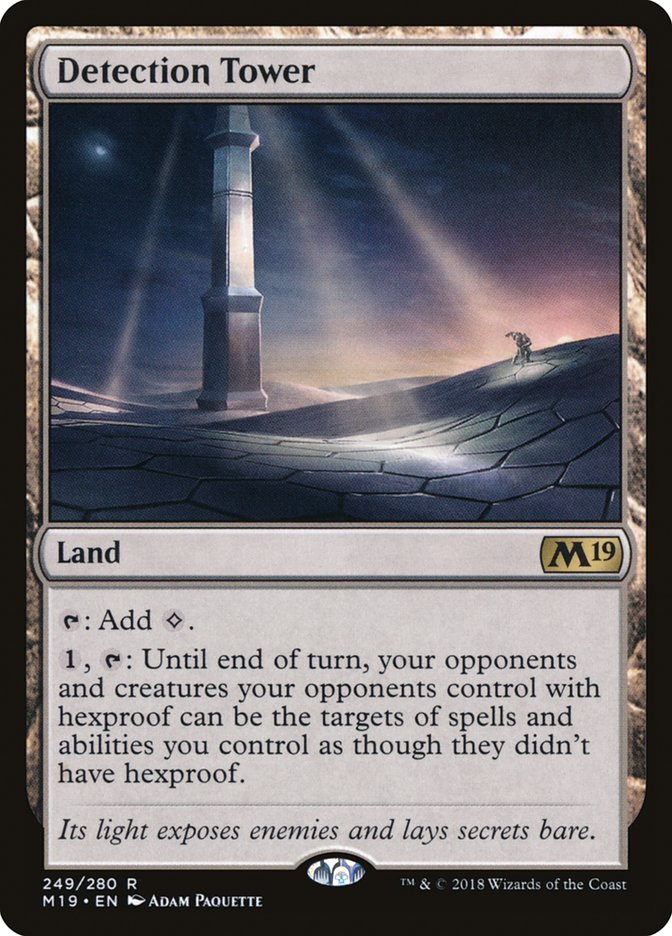It’s the Monday before the Pro Tour. I wake up to my ambitious 9:00am
alarm, very sick. Just a hair over 60 hours until decklists are due,
and if I had to register at this exact second, I’d be shamefully
submitting a Lich’s Mastery 75 without a lick of testing.
How did it come to this?
This article is going to be a little different. If you’re looking for
something that’s going to tell you the best deck to play for a PPTQ next
weekend, go read nearly any other article published here on StarCityGames
this week. We’ve got you covered on that front, but that’s not what I’m
doing today.
Instead, I’m looking to give you some insight into what preparing for the
Pro Tour is like for those without the resources of the huge pro teams.
So close to having a deck for this PT. @AutumnLilyMTG
and I have been locked in my basement for three days jamming matchup after
matchup deck after deck and the end is in sight!Can’t
wait to play the PT (and to leave this basement, so many bugs down
here).— Jadine Klomparens (@thequietfish) November
7, 2018
Resource-heavy would be the last way to describe my testing. For the most
part, my process involved only myself and
Autumn Burchett
, and while there’s no one in the world I would rather test with than
Autumn, having only two people is still a problem. To make it worse, we
ended up only having three days to work. We ended up having to prioritize
efficiency and quick decisions above all else, and I think we did an
incredible job with the resources we had. Our situation mirrors the spot
that a lot of players find themselves in when preparing for big events like
Opens or Grand Prix, and I hope that hearing how Autumn and I handled the
difficulties will help you improve your testing processes.
Quick shoutout to Lucas Berthoud
, whose Pro Tour testing / tournament reports on Reddit inspired me to
write this. You can find his latest
here
, and I highly recommend checking it out for even more insight into how
different groups approach preparing for major tournaments.
Prelude
So then, back to that opening question. How did Autumn and I end up in such
a dire situation three days before deck lists were due?
As you might imagine, answering that question involves rewinding a little
bit. After I qualified for this Pro Tour at the RPTQ, I decided very
quickly that I wasn’t going to stress finding a big testing squad. I was
under the impression that such things were no longer nearly as important
with the Pro Tour pushed to a month after the set’s release, and since I
knew I was moving in September and the next few months would be very busy
for non-Magic reasons, I was ready to risk my Pro Tour success on that
impression.
Autumn Burchett and I had collaborated on the Dimir Midrange deck that both
of used to succeed at our respective RPTQs and that Autumn also won their
Nationals tournament with. We felt that we worked together very well and
were ready to run it back for this Pro Tour. Autumn was going to be in the
States for the week between GP Atlanta and the Pro Tour, and our plan was
to spend that week doing a ton of live testing, while also using the week
before GP Atlanta to ensure we started our live testing with a good
understanding of what the format was like.
I still think that plan was sound, but it was not to be. I ended up getting
sick after making the Top 8 at #SCGCHAR and
being out of commission for the whole next week. This meant that our week
to figure out what we wanted to accomplish in our live testing was gone,
and we were substantially behind where we wanted to be. That’s life
sometimes.
Two things that would end up being important to our testing happen during
Grand Prix Atlanta. The first is that we were approached by Zac Elsik, who
told us that he is planning on playing Lich’s Mastery in the Pro Tour and
thinks it beats everything besides Jeskai Control. This is exciting, and we
told him we’ll give it a shot and work on it with him if it looks
promising.
The second is our conversation on the drive back from Atlanta to Roanoke,
where we were lucky enough to also enjoy the insights of our carmates Emma Handy and
Ross Merriam
. We looked at the results of the MOCS Monthly and discussed the rise of
aggressive white decks. Ross pointed out how well-positioned Thrashing
Brontodon looked in the current metagame, which we quickly agreed with.
This spun-off into a largely unproductive Dinosaur brewing session, but the
knowledge that Thrashing Brontodon looked great would be very relevant in
our testing.
Eight long hours later, we were back in Roanoke. Our three short days of
testing would begin the next morning.
Day One
It’s the Monday before the Pro Tour. I wake up to my ambitious 9:00am
alarm, very sick. Just a hair over 60 hours until decklists are due, and if
I had to register at this exact second, I’d be shamefully submitting a
Lich’s Mastery 75 without a lick of testing.
Overwhelmed and sick, I go and down some cold medicine, apologize to
Autumn, and go instantly back to sleep.
I don’t manage to get up for the day until 1:00pm, but we finally catch a
break: I’m feeling better. Or more accurately, that cold medicine I took
has me functional. I’m low energy and I’ve already wasted half of one of
our precious three days, but at least I’m ready to sit down and play Magic
for the next two and a half days.
Autumn had used their time productively while I was busy sleeping and has a
bunch of decks ready for us to play. We both know where we need to start:
Lich’s Mastery versus the Boros Aggro decks from the MOCS Monthly. Our late
start means that we only have time to investigate one or two brews, but if
Lich’s Mastery is the real deal we’ll be in a great spot. Spending time on
the deck is a risk, but it’s one worth taking if we make sure to not invest
much time in it if it doesn’t look very strong very quickly.
Lands (26)
Spells (34)

One of the problems of testing decks like Lich’s Mastery is that playing
them proficiently is not something to take for granted. Luckily for me,
while I was sleeping, Autumn had consumed all the available content on the
deck and had goldfished it for an hour or two and believed they were ready
to play it competently. They would be our Lich’s Mastery player for the
duration of the time we spent on the deck.
We started playing games, Lich’s Mastery against Boros Aggro. A lot of
people will sit down and play a pre-determined number of games to test a
matchup. Autumn and I didn’t have time for that. We were less interested in
collecting data than in understanding how the matchup went, and that meant
that we needed to just play games until we felt we had gained the
understanding we were looking for. The trick would be in not playing too
many games, so we made sure to talk about what we learned and how things
felt after every game we played.
We ended up playing five games of this matchup. After the third game, we
stopped alternating play/draw and gave Boros the play every game. Lich’s
Mastery ended up winning the series 3-2, but the two games that Boros Aggro
won felt like anomalies. The Lich’s Mastery deck needed two sweepers to
beat the Boros decks, but finding those two sweepers was very easy, and
there appeared to be no way for the Boros deck to win through them.
The next thing we wanted to do was figure out how Lich’s Mastery felt
against Golgari Midrange, but we didn’t actually end up playing any games.
We had both played a lot of Golgari at the very beginning of the format,
and neither of us felt that Golgari had much of a chance in game 1 and only
a very small chance after sideboard. Playing the games felt like a waste of
time, so we just decided to treat the matchup as very good for Lich’s
Mastery and moved on.
Next up was the real test for the Lich’s Mastery deck: Jeskai Control. This
was the matchup we knew was going to be bad, but there’s a wide margin
between 20% bad and 40% bad. We played two games pre-board, both of which
were very easily won by Jeskai Control. Autumn claimed it felt like they
just couldn’t beat a counterspell, and the fact that Cleansing Nova could
just win the game once a Lich’s Mastery was out meant that it felt like
game 1 was hopeless. We decided to move on to post-board games.
While sideboarding, we talked about what needed to happen for us to be
happy with Lich’s Mastery. We thought that Jeskai Control would be
somewhere between 10 and 15% of the PT field, and we wanted to be at least
30% against such a popular deck to feel comfortable. Given a basically 0%
game 1, this ends up meaning that we needed Lich’s Mastery to be about 60%
to win in the post-board games.
The sideboard plan we were working with involved the Lich’s Mastery deck
becoming much less of a combo deck and bringing in Adanto Vanguard and
Carnage Tyrant to force the control deck to spend mana defensively. The
problem was that the Jeskai Control deck just naturally wanted to bring in
its own sideboard creatures, making those Adanto Vanguards much less
effective than they otherwise would be. They were still quite good, but not
as good as they needed to be. We played four or five games and concluded
that the Lich’s Mastery deck was close to even after sideboard, but still
behind.
This fell short of the bar we set, and I was off Lich’s Mastery as a
result. Autumn thought there would be less Jeskai at the PT than I did, and
still wasn’t completely off the deck. They agreed to play some leagues with
the deck without me overnight, and we moved off Lich’s Mastery for the time
being.
Next up, we decided to play games with Golgari Midrange against the new
breed of aggressive white decks. Golgari was essentially beaten up at the
Grand Prix and at the MOCS Monthly, but we were pretty sure that the Boros
decks would have a very hard time beating Wildgrowth Walker builds of
Golgari. I threw together a build of Golgari featuring Wildgrowth Walker
and the Thrashing Brontodons we talked about in the car, and we played some
games.
Six games later, we were quite convinced that we were right. Golgari
Midrange went 5-1 over the Boros decks, and the games felt like they were
playing out typically. Brontodon as an additional source of enchantment
removal for the Conclave Tribunals Boros had to have to beat Wildgrowth
Walker meant that it took a fairly unfunctional draw from Golgari for Boros
to stand a chance.
I was almost out of energy at this point, so we just decided to play a few
games of Golgari versus Jeskai since we already had those decks ready and
wanted to get more testing in before being done. I believed Jeskai had to
severely contort itself to beat Carnage Tyrant, and the few games we played
illustrated my point for me. We played five games, three of which were
decided by a lone Tyrant when Jeskai was infinitely ahead by every other
metric.
Day one was in the books. We did a short debrief while eating dinner. I was
pretty convinced I was going to end up playing Golgari, as it was the only
deck I was confident I would be able to play competently. Autumn was
between Golgari and Jeskai and maybe the Lich’s Mastery deck, pending how
their online play of it went that night. Neither of us wanted to play the
Boros decks, as we were too scared to play maindeck Tocatl Honor Guards and
felt the deck was too exploitable without that protection. We agreed that
the Jeskai versus Golgari matchup would be important for the Pro Tour and
agreed to pick up tomorrow with sideboard games and move from there to
different builds of the two decks. Our goal was to both decide on what
archetype we wanted to play halfway through the day and then start tuning.
We parted ways. I crawled through a Gatherer search of every Standard-legal
card castable in a Golgari deck. Autumn played some Magic Online.
Day Two
I woke up at the somewhat reasonable hour of 10:00am, feeling mostly human
finally. The first thing Autumn said to me when I joined them in the
basement was that they had lost two matches last night to a single
Disdainful Stroke out of the sideboard of Izzet Drakes while playing Lich’s
Mastery and was completely off the deck as a result. I wasn’t going to
argue.
We played Golgari Midrange builds against different Jeskai Control builds
for the next three hours. This was much longer than we had spent on any
matchup up until that point, but we knew this matchup was going to be very
important and wanted to be sure we got it right. About an hour in, we
realized something important: our build of Golgari had accidently broken
this matchup.
As mentioned previously, Autumn and I had both played a lot of the Golgari
Midrange deck, and neither of us liked Llanowar Elves. We felt that they
were bad everywhere except the mirror and tried to build the most
streamlined non-Llanowar Elves version of Golgari we could. We had four
Wildgrowth Walker and three Thrashing Brontodons, and after the third game
we realized that Jeskai’s Deafening Clarions were looking mighty
embarrassing.
The way the Jeskai versus Golgari matchup plays out when Golgari has access
to Carnage Tyrant is that the Jeskai player can’t afford to take much
damage from the small creatures of the Golgari deck. They need any copies
of Cleansing Nova and/or Settle the Wreckage that they draw to answer
Carnage Tyrant, which leaves Deafening Clarion to handle the smaller
offenses. That used to be fine, but now that we had access to seven early
creatures that potentially had four toughness, Clarion was no longer up to
the task.
It was wild how much this swung the matchup. It was trivially easy for the
Golgari player to force the Jeskai player into using a big sweeper on their
early creatures, then drop a Carnage Tyrant and win the game. Golgari could
be unbelievably far behind and still pull out wins thanks to how poorly the
Jeskai cards lined up.
We agreed that Jeskai needed to be a Deafening Clarion deck to handle all
the aggressive decks we expected, which meant that Jeskai would have to
change something else if it wanted to handle our new build of Golgari. We
tried everything we could think of: Rekindling Phoenix, Azor’s Gateway,
more spot removal, less spot removal, more Settle the Wreckages, etc.
Nothing worked and eventually we decided that our Golgari list was favored
against Jeskai.
We were well into the afternoon of the second day now, but it was worth it.
We were both locked into Golgari and it was time to start determining the
exact 75 that we would play. Autumn very smartly insisted that the first
thing we should do is write down a list of the things we wanted to learn.
Here’s that list:
- How much do mana accelerants matter in the mirror?
-
Do we want Ritual of Soot, Golden Demise, or neither against the
white aggressive decks? - Play Golgari vs Boros Angels
- How do we handle Tocatl Honor Guard?
- Is Karn something we’re interested in playing?
- Play Golgari vs Izzet Drakes
- How many two-drops do we want?
- How many removal spells do we want in the maindeck?
- Is Vraska, Golgari Queen good?
We decided to start with the question about mana accelerants in the mirror,
as Llanowar Elves was easily the most important decision left to us. To
best test this question, we put together the hyped Golgari-beating Golgari
deck from Grand Prix Lille.
Creatures (25)
- 4 Llanowar Elves
- 4 Druid of the Cowl
- 4 Carnage Tyrant
- 4 Merfolk Branchwalker
- 4 Jadelight Ranger
- 3 Ravenous Chupacabra
- 2 Midnight Reaper
Planeswalkers (5)
Lands (23)
Spells (7)
Sideboard

Not only did this deck play four copies of Llanowar Elves, it also played
four copies of Druid of the Cowl. If mana acceleration mattered in the
mirror, playing against this list would tell us. We ended up playing twenty
or so games, including some where we gave Hauck’s list Llanowar Elves in
every opening hand. We ended up reaching the conclusion that they could
matter when on the play in game 1s, but that Golgari had access to enough
tools to stop from being buried by an ahead of schedule Carnage Tyrant or
planeswalker most of the time, and that once the game reached turn 7 or 8
the mana creatures were only liabilities. In sideboard games the mana
creatures mattered even less, due to the additional planeswalker removal
spells. We decided we were comfortable not running Llanowar Elves and
finalized that decision.
We answered one question on the list, but had to add another:
- How in the world do we beat Carnage Tyrant stalls in the mirror?
If you haven’t had the joy of playing Golgari mirrors when both sides are
on the Carnage Tyrant plan, I recommend doing anything else instead. The
games are miserable. We figured out how to manage the situations as best as
possible, but really wanted a way to break that spot in our favor.
While playing these games, we also kept an eye out on some of the other
questions on the list. We decided we wanted as many two-drops as possible
and went up to the full four Seekers’ Squires. We decided we didn’t like
Karn, Scion of Urza due to not having a threatening ultimate, but that
Vraska, Golgari Queen was a great combination threat and piece of
interaction. We settled on two Assassin’s Trophy and one Vraska’s Contempt
as the correct numbers for the maindeck and were happy with that answer for
the remaining of our testing.
That was just about it for our testing on day two, as this all took us
until 1:00 a.m. We only covered two matchups, but we covered them
exhaustively and made a lot of changes to our deck along the way. I believe
we stopped the mirror games three different times to make substantial
changes to our list, all of which improved its performance considerably. We
went to bed satisfied, ready to attack the rest of the format’s matchups in
the morning.
Late that night, I sent Autumn a Facebook message asking about trying
Adventurous Impulse. I wasn’t sure we had time to try and experiment with
it, but it was theoretically a card we got to play thanks to our choice to
eschew Llanowar Elves. Autumn was enthusiastic about the idea, and we
agreed to play with it tomorrow while we worked on other things and see how
it felt.
Day Three
My miserable sickness had dialed itself down to a common cold, and I was
able to start testing at 9:00am. Autumn needed less sleep than I did and
had Boros Angels and Izzet Drakes all proxied up and ready to go. We
started with Izzet Drakes.
Our theory going in was that Wildgrowth Walker would swing this matchup in
our favor, that the lifegain would be difficult for them to kill us
through. It only took us a couple of games to realize that we drastically
underestimated just how big these Drakes could get. Six or so games later,
we concluded that we were moderately unfavored in game 1. We just didn’t
have enough ways to interact with their drakes and couldn’t kill them
before they became supercharged.
We developed a beautiful sideboarding plan: cut everything that costs more
than four mana and morph into a very aggressive version of Golgari
maximized on interaction. Not having clunky Carnage Tyrants and Vivien
Reids proved to be very effective, and when coupled with the ability to
easily kill every Drake they played as well as interact with the graveyard
via Deathgorge Scavenger, we concluded that we were comfortably ahead
post-board and thus, happy with the matchup. The Cast Downs and Deathgorge
Scavengers were locked in, and we were feeling good and on to other things
within two hours of starting on the matchup.
Boros Angels would prove to be a trickier nut to crack. It didn’t take us
any longer, but largely because we gave up. Beating Tocatl Honor Guard
proved to be nearly impossible. Our expensive cards didn’t line up well
against the deck, and our cheap cards didn’t function with an Honor Guard
on the battlefield. These conclusions came quickly, and since we didn’t see
a way to fix them and didn’t expect a ton of Boros Angels, we just moved
on.
Playing that matchup did help us decide on our sweepers. We definitely
weren’t interested in Golden Demise since it didn’t answer Honor Guard and
Ritual of Soot felt like it was too slow and played too poorly with the
rest of our plan to possibly be good in the matchup. We decided to be high
on spot removal and play no sweepers.
Over lunch, we discussed ideas for beating Carnage Tyrant. Ochran Assassin
and Detection Tower were our best ideas, and we decided to go back to the
mirror and figure out if either did anything. Two games with Ochran
Assassin later, and we decided it wasn’t influential enough to be worth a
spot. One game with Detection Tower after that and we decided the card was
fantastic. The game was decided by Autumn eventually drawing it, and five
turns before that we both knew that whoever found it first would end up
winning. The fact that both Vivien Reid and Adventurous Impulse could find
Detection Tower really made it feel like our deck was optimizing Tower in a
way other builds of Golgari couldn’t.
And just like that, we were done. Two and a half days of testing and we had
a Golgari list we were proud of.
Aftermath
Autumn went 6-3-1 in Constructed at the Pro Tour to finish in 19th place,
an excellent finish. Aaron Barich went 6-4 with our 75, although it should
be noted that Aaron and Autumn played each other once during the
Constructed rounds. I went 1-4 during the Constructed portion of the
tournament, but my day was strange, to say the least.
I understand that the PT involves stiff competition, but my
goodness what @thequietfish
had to fight through today. Her “easiest” opponents by
Elo were [checks notes] @efropoker
and @SethManfield.
Round 8 she plays for day two against PT champion @nalkpas
(2069). #ptgrn
pic.twitter.com/TRpX01qWZU—
ajlvi (@ajlvi) November
10, 2018
I lost a lot at this Pro Tour, but it’s hard to be too upset about going a
little under 50% against the best of the best players in the world.
Autumn’s result was what we were striving for, and a team of two getting a
successful result for one person is a fantastic result. I’m very proud of
the work we did.
However, that doesn’t mean we did everything right. Here are the three big
mistakes I think we made:
-
We never checked our work on Llanowar Elves being bad everywhere
but the mirror. This was true at the beginning of the format, but I
think Elves is the best way for Golgari to present a cohesive
gameplan in the face of Tocatl Honor Guard. We missed that. -
We came up with a great list of questions to answer but tackled
them in the wrong order. We should have played games against Boros
Angels and Izzet Drakes much sooner than we did and thus, let those
matchups shape the construction of our deck. By playing against
them on our last day, they were only able to impact our sideboard. -
We assumed we knew too much. This one is trickier, but basically
Pro Tours are a place where the games best all try and beat each
other. Weird stuff happens, and our sideboard was too streamlined.
I played against two amazing players on decks I wasn’t prepared
for, and our sideboard had no generically powerful cards to let me
shift my game plan.
And a bonus mistake we made that wasn’t really our fault: we didn’t evolve
any other decks besides the one we were interested in playing. We didn’t
really have the resources to do so, and this is the big thing that pro
testing teams have that we didn’t. We played against stock lists of the
other archetypes the whole time, because we didn’t have three days to dive
deep into each of them. There’s nothing we could have done about this given
the resources we had, but it’s a marked weakness of our approach.
That all being said, for the most part our process was excellent. Every
time we sat down to play a game of Magic, we knew exactly what we wanted to
learn. Once we learned that thing, we stopped playing and figured out what
the next thing we wanted to learn was. I strongly recommend this approach.
Data about matchups doesn’t really start being meaningful until you play at
least fifty games, which just isn’t practical. Don’t worry about the
numbers and try to learn from the games instead of simply recording them.
If you’re interested in hearing more about the exact Golgari Midrange deck
Autumn and I played, Autumn will have an article on it tomorrow on this
very website, so come back then for some top notch strategy content. If you
liked this style of article, please tell me in the comments so I know to
run it back sometime.


